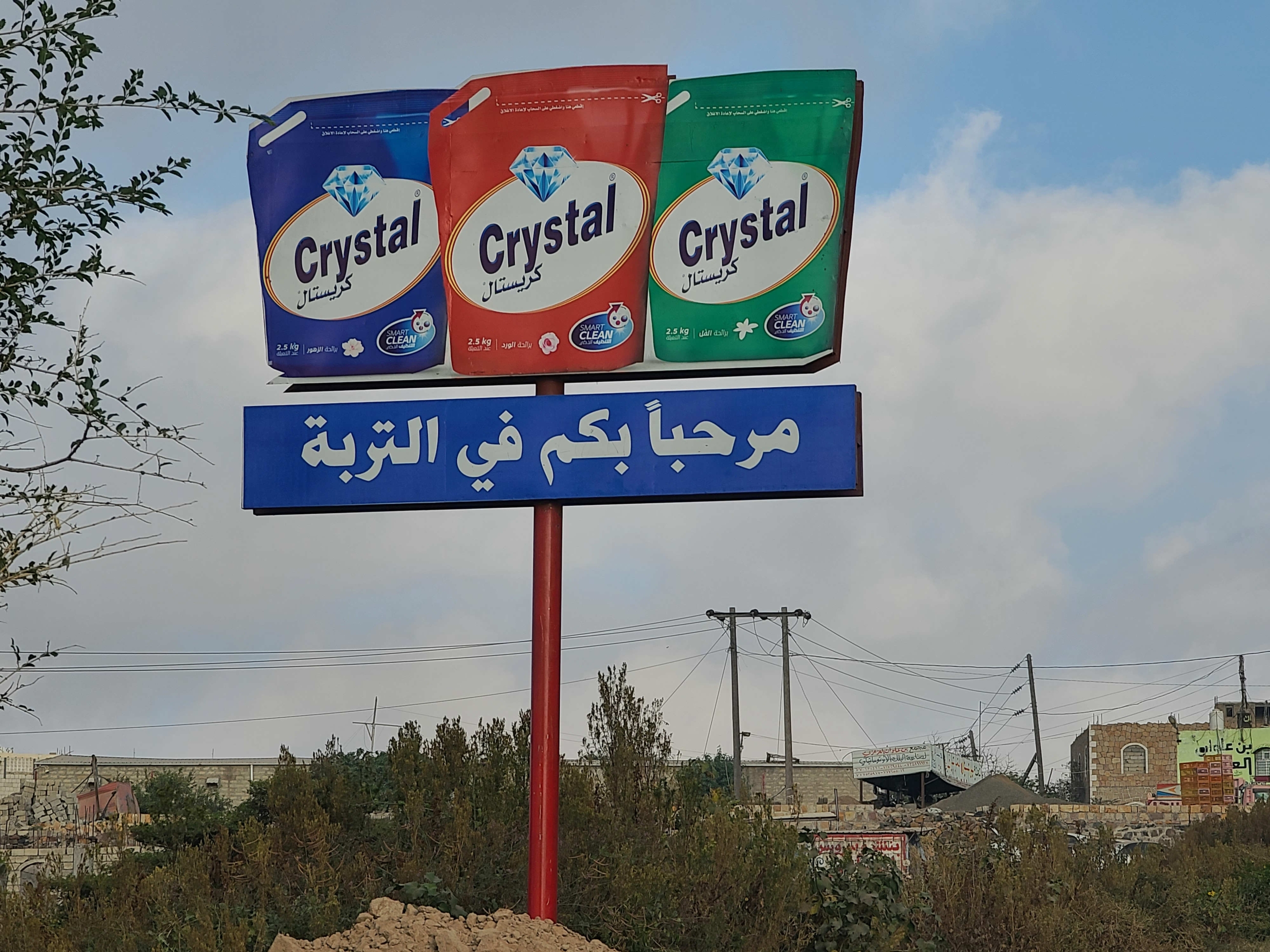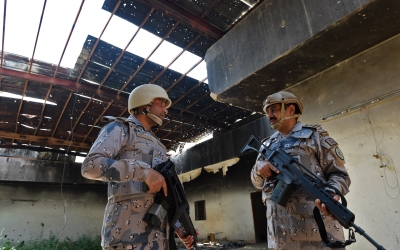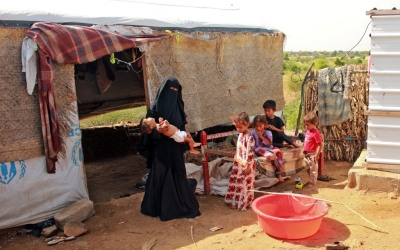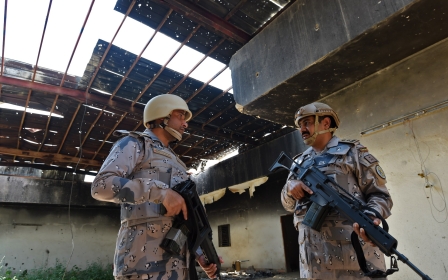Yemen's villages increasingly urbanised as residents desert besieged cities

Since the outbreak of Yemen's civil war in 2015, residents of many cities have been forced to flee to rural areas to start a new life, leaving some urban areas almost deserted.
While fighting may swiftly move from one village to another, cities like Taiz and Hodeidah have found themselves in a stalemate for years, stifling any hopes of development.
Cities are still seen as the most important places for the warring parties to seize - the location of public institutions, ministries, palaces, military camps and other major institutions - with neither side willing to give way.
However, with the exodus to the countryside, some officials have started to practice their work from safer rural areas, many of which have become increasingly urbanised and offering many of the services found in the city.
It is estimated that more than 3.6 million people have been forced to flee their homes in Yemen since the start of the conflict in 2015, according to the UNHCR.
According to an official government report issued in 2016, in 2010 more than 70 percent of Yemen's population lived in rural areas, distributed in more than 130,000 villages and localities.
Around 29 percent were urban dwellers, living in 3,642 centres.
The continuing fighting means there are no recent figures, but the shift to the relative safety of the countryside has had profound effects.
New clinics, institutes and shopping centres can be found in what were once rural backwaters, with large numbers of displaced people working on further construction.
As the price of land has spiralled along with demand, many villagers have given up their farming and sold their land to developers.
The influx of displaced people has also led to tensions in the traditionally closely knit communities, with new arrivals often labelled as "strangers".
'The first year was very difficult'
Ghassan Nadhem, 39, is one of those who fled his home in Taiz city in 2016, when battles hit the neighbourhood where he lived.
He escaped to a village in the Al-Shimayateen district, 70km from Taiz, where he had relatives.
Nadhem works as an accountant, providing for five family members, and it was difficult for him to adapt to a new life in the country.
"I was born in Taiz city, and I only used to visit rural areas when we went out on picnics a few times a year," he told Middle East Eye.
"The first year was very difficult, as I didn't have any work and I didn't know where to go to enjoy things, but then things started getting easier.
"Some investors in Taiz city opened their projects in Al-Shimayateen district and there were many new buildings. Moreover, the investors closed their offices in Taiz and opened them here."
Nadhem applied for a job with one of their organisations in Al-Shimayateen and was lucky enough to get taken on.
"Investors, organisations, institutions and all people are looking for safety, so many of my friends left Taiz city and came to look for work in Al-Shimayateen," he said.
"It isn't a rural area any more, and it is now like a city where you can receive all basic services.
"Moreover, the chances of work here are better than in the city. I myself started to build a home here after our home in Taiz city, which lies in a deserted area near to the front lines, was damaged."
Nadhem is sad about his old home but is happy to see the huge amount of development and construction going on in rural areas.
"One of the good things amid this crisis is the urbanisation of rural areas," he said.
'I can't leave the city'
Tallal al-Shaibani, 48, another resident of Taiz city, has chosen not to flee his home, despite living in a neighbourhood that is sometimes shelled. Because of the shelling he prevents his children from playing outdoors or leaving home after sunset.
"The city isn't safe, and shelling hits our neighbourhood from time to time, but it is difficult to leave the home where I was born and grew up in," he told MEE.
"Most of our neighbours fled towards rural areas in Taiz and some to other provinces, but for me I can't leave the city."
Shaibani, who works as a carpenter, said there is no longer the same amount of work as before the war but he's happy so long as he can earn enough money to provide for his family.
"Construction nowadays is in areas like Al-Hawban and Al-Turbah that used to be rural areas, but I prefer not to leave my home, so I'm struggling," he said.
Thriving shops
Mohammed Mahyoub, the owner of a clothes shop in Taiz city, closed his store in 2015 and in 2017 opened a new store in Al-Turbah, the area mentioned by Shaibani.
"Al-Turbah isn't a rural area any more," Mahyoub told MEE. "The displaced people from the cities along with others from surrounding villages and the offices of organisations have changed it into a city.
"Nowadays you can't find a home or a shop easily on the market.
"You can see the ongoing construction, and there is [strong] demand for the land here, so the rents for homes and shops have doubled.”
Mahyoub said that people look for the areas where they can find work, and that used to be Taiz city.
But now, he said, the city has become a conflict zone and isn't even the main centre of Taiz province any more.
"Even the governor of Taiz and other officials don't dare to go to Taiz city because it isn't safe, but they come to Al-Turbah from time to time as it is safe, and it is now a city and not a village as before."
Mahyoub said he can earn a good profit from his work in the new shop, and advises his colleagues to invest in Al-Turbah and similar areas until the war ends and Taiz returns to how it was before 2015.
'Strangers in our villages'
Many villagers believe that urbanisation is good for their areas as there are now better services and more chances for work, but some resent the fact that often the villages are no longer the exclusive domain of of specific families.
Ahmed Hassan, a builder in his 50s in Al-Turbah, told MEE: "Before 2015, we used to travel to cities to look for work, but nowadays there are better chances of work in our area.
"This has led to an increase in land prices, so farmers are selling their land and they are being changed into residential areas," said Hassan.
He said farming was no longer a source of income for people in his area and that they preferred to sell their land for people to build on as this was more profitable.
"All that is a good face of urbanisation, but the bad thing is that our villages aren't our own any more, and now there are strangers in our villages," he added.
Traditionally in Yemen, specific families live in certain villages and usually no one from another area comes to build a home in that village.
The surnames of the families are also often named after the names of the villages.
"In our village, there are displaced people from Taiz city, Ibb, Dhamar and other governorates, and some of them are working as fighters," said Hassan.
"We aren't happy to see them in our villages as we used to live as one family, and now we can't practice our regular life freely because of those strangers."
Middle East Eye delivers independent and unrivalled coverage and analysis of the Middle East, North Africa and beyond. To learn more about republishing this content and the associated fees, please fill out this form. More about MEE can be found here.








